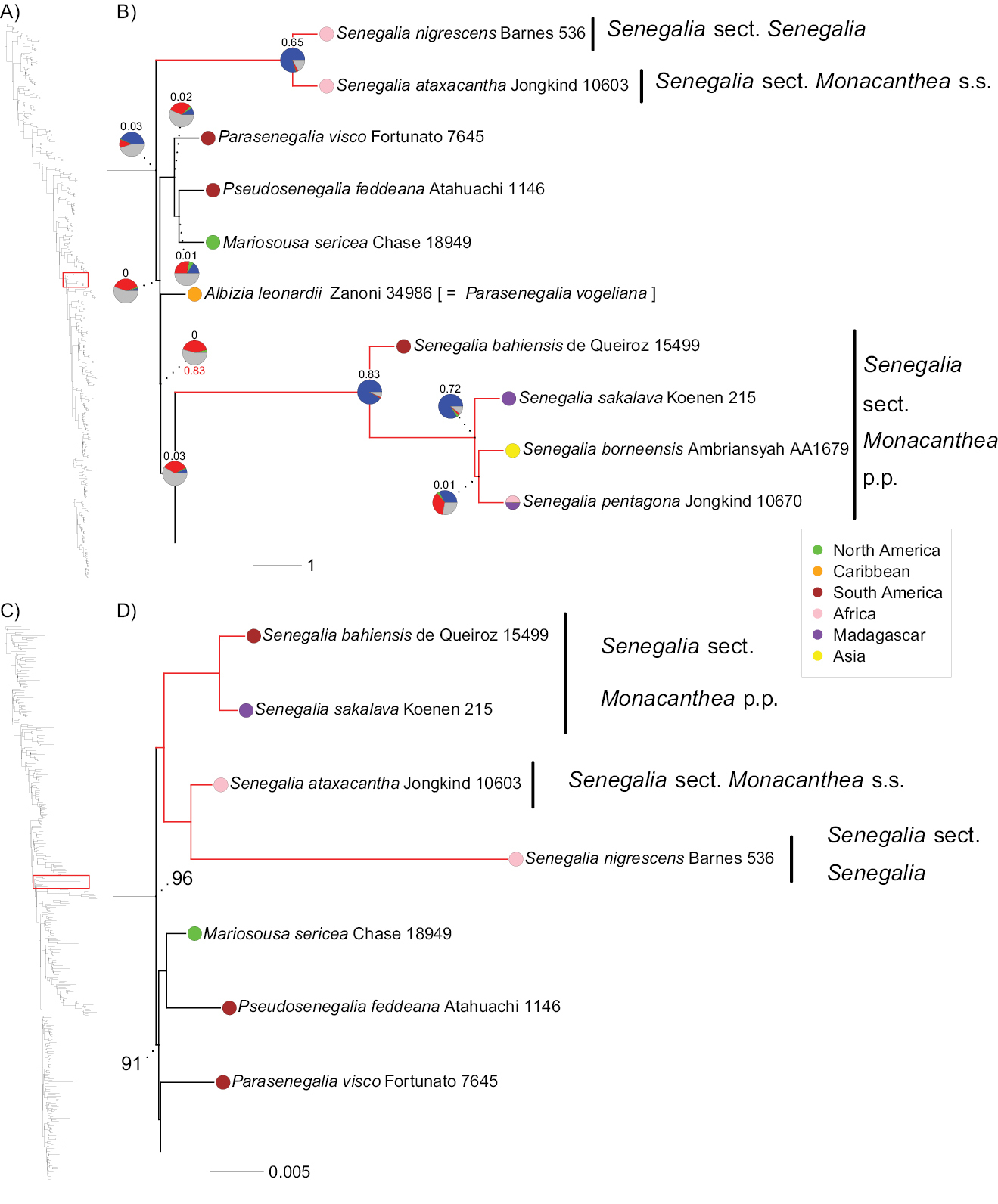
|
||
|
Cytonuclear discordance in Senegalia and allies A phylogeny of Caesalpinioideae, showing the placement of Senegalia and closely related genera (boxed in red) within the subfamily (Ringelberg et al. 2022). The phylogeny contains 420 taxa (excluding outgroups) and is based on 997 nuclear genes analysed using ASTRAL (Mirarab 2019) B phylogeny of Senegalia and allies (details from A). Pie charts at nodes show the fraction of gene trees supporting that bipartition in blue, the fraction of gene trees supporting the most likely alternative configuration in green, the fraction of gene trees supporting additional conflicting configurations in red and the fraction of uninformative gene trees in grey. Numbers above pie charts show quartet-based Extended Quadripartition Internode Certainty scores (Zhou et al. 2020), numbers below pie charts the outcome of ASTRAL’s polytomy test, which tests the null hypothesis that a branch should be replaced by a polytomy (only values > 0.05 are shown). In both A and B, branch lengths are expressed in coalescent units and terminal branches were assigned an arbitrary uniform length for visual clarity C plastid gene tree of Caesalpinioideae showing the placement of Senegalia and closely-related genera (boxed in red) within the subfamily (Ringelberg et al. 2022). The phylogeny contains 381 taxa (excluding outgroups) and is based on 72 concatenated plastid genes analysed using RAxML (Stamatakis 2014) D plastid phylogeny of Senegalia and allies (details from C). Numbers at nodes show bootstrap support values for nodes that are not fully supported. In both C and D, branch lengths reflect nucleotide substitutions. In both B and D, the root is not drawn to scale. |